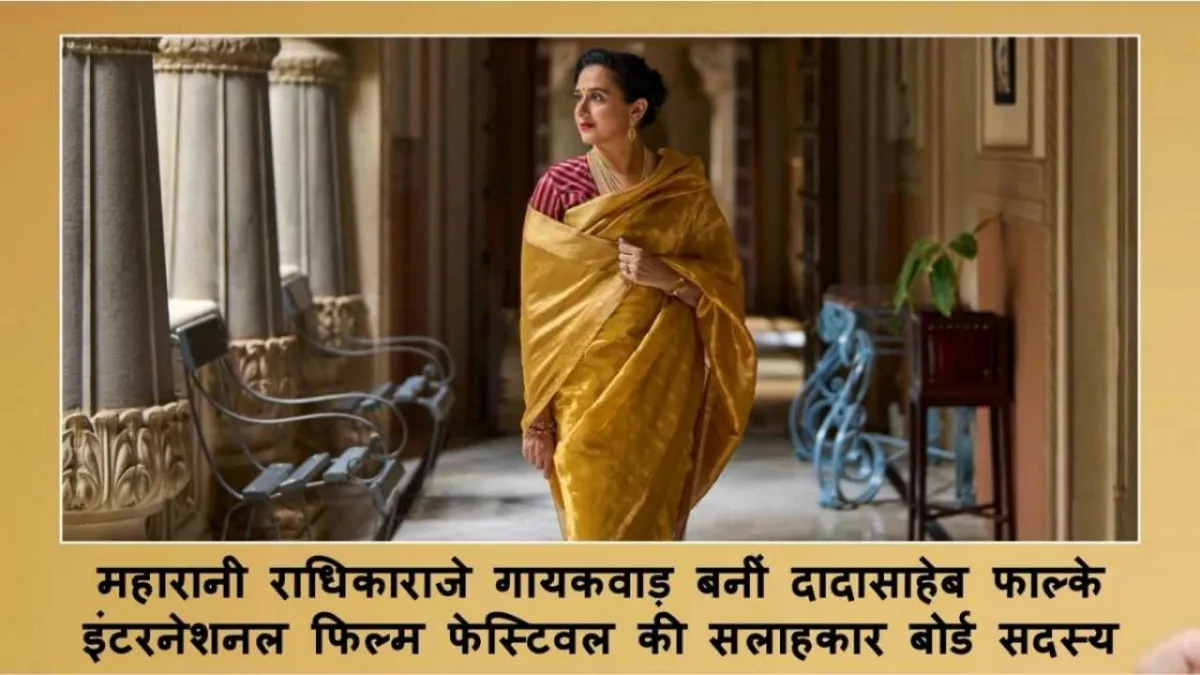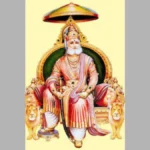New Delhi: In a historic announcement, the Dadasaheb Phalke International Film Festival (DPIFF), one of Indian cinema’s most prestigious platforms, revealed that Maharani Radhikaraje Gaekwad of Baroda has joined the festival’s advisory board.
This association marks a new chapter in the Indian film festival landscape, bringing together royal heritage and cultural vision. Radhikaraje Gaekwad’s presence will not only elevate the festival’s prestige but will also contribute to establishing India’s art, culture, and cinema more powerfully on the global stage.
Inspired by the legacy of Dadasaheb Phalke, DPIFF has been honoring the biggest names in Indian cinema and emerging talented artists for years. The festival’s advisory board already includes several distinguished personalities.
On this occasion, the CEO of DPIFF stated, “We are extremely proud to welcome Maharani Radhikaraje Gaekwad. Her dedication to preserving Indian culture and heritage is inspiring. Her experience and perspective will provide the festival with new direction and energy.”
As the patron of Lakshmi Vilas Palace, Baroda, Maharani Radhikaraje Gaekwad is a prominent figure in Indian royal history and the art world. She has led numerous social and cultural campaigns over the years that promote Indian heritage, art, and culture. Her association with DPIFF will take the convergence of Indian cinema and culture to a new level.
Regarding her association, Maharani Radhikaraje Gaekwad said, “It is an honor for me to join the advisory board of the Dadasaheb Phalke International Film Festival. I appreciate DPIFF’s commitment to recognizing cinematic excellence and promoting our cultural heritage globally.”
For years, DPIFF has strongly supported campaigns such as the Tourism Ministry’s ‘Incredible India’ and the Culture Ministry’s ‘Prime Minister’s Museum’ while showcasing the cultural diversity of more than 15 Indian states. The festival has now emerged as a global cultural force, giving new dimensions to Indian cinema’s reputation.
Maharani Radhikaraje Gaekwad’s association with DPIFF is not merely the addition of a name but symbolizes a heritage – a convergence where royal dignity, cultural leadership, and cinematic excellence are coming together to create a golden chapter in Indian cinema.
About Dadasaheb Phalke International Film Festival (DPIFF):
Dadasaheb Phalke International Film Festival is India’s most prestigious…
Tags: DPIFF, Dadasaheb Phalke, Baroda, Indian Cinema, Indian Art, Maharani Radhikaraje, Cultural Heritage, dpiff, Dadasaheb Phalke International Film Festival
Dadasaheb Phalke International Film Festival
The Dadasaheb Phalke International Film Festival (DPIFF) is an esteemed Indian film festival held annually in Mumbai, established in 2012. It was founded to honor the lifetime achievements of Dadasaheb Phalke, the pioneering father of Indian cinema. The festival celebrates and awards excellence in both Indian and international cinema across various categories.
Maharani Radhikaraje Gaekwad
Maharani Radhikaraje Gaekwad was a prominent 20th-century royal figure of the Gaekwad dynasty, which ruled the princely state of Baroda (now Vadodara) in Gujarat, India. She was the wife of Maharaja Pratap Singh Gaekwad and was known for her active involvement in social, cultural, and philanthropic activities, contributing to the region’s development during her time. Her legacy is tied to the modern history of the Baroda royal family and their patronage of education, arts, and public welfare.
Baroda
Baroda, now officially known as Vadodara, is a city in the Indian state of Gujarat. It was historically the capital of the powerful Gaekwad dynasty, which transformed it into a major center for art, culture, and education in the 18th and 19th centuries. The city is renowned for the lavish Laxmi Vilas Palace, one of the largest private residences in the world.
Lakshmi Vilas Palace
The Lakshmi Vilas Palace in Vadodara, Gujarat, is an extravagant Indo-Saracenic architectural marvel built by Maharaja Sayajirao Gaekwad III in 1890. It was once the private residence of the royal Gaekwad dynasty and is renowned for being nearly four times the size of Buckingham Palace. Today, the palace remains the residence of the royal family, with a portion open to the public as a museum showcasing a rich collection of art and historical artifacts.
Incredible India
“Incredible India” is not a single place but a national tourism campaign celebrating the country’s vast cultural and geographical diversity. It highlights India’s ancient history, from the Indus Valley Civilization to the Mughal and British colonial eras, which have left behind a rich tapestry of monuments, traditions, and architectural wonders. The phrase encapsulates the essence of a land known for its vibrant festivals, diverse religions, and iconic sites like the Taj Mahal and Himalayan landscapes.
Prime Minister’s Museum
The Prime Minister’s Museum, also known as Pradhanmantri Sangrahalaya, is a museum in New Delhi, India, dedicated to showcasing the lives and contributions of all the country’s Prime Ministers. It was inaugurated in 2022 and aims to create a comprehensive historical record of India’s journey as a democracy since its independence. The museum uses advanced technology to present the legacy and governance of each leader.
Indian cinema
Indian cinema, popularly known as Bollywood, originated with the first full-length silent film “Raja Harishchandra” in 1913. It has since grown into the world’s largest film industry in terms of output, renowned for its vibrant music, elaborate dance sequences, and dramatic storytelling that reflect the diverse cultural tapestry of India.
Indian art
Indian art encompasses a vast range of artistic traditions that have evolved over thousands of years, from the ancient Indus Valley civilization to the present day. It is deeply intertwined with the subcontinent’s diverse religions and cultures, producing iconic forms such as Hindu temple sculpture, Mughal miniature painting, and vibrant folk arts. This artistic heritage reflects a continuous dialogue between spiritual philosophies, indigenous practices, and various external influences throughout history.






